Plant of the Month: February 2012
|
| Weedy Violets in Seattle |
VIOLACEÆ; Violet Family
|
Seven Viola species are native in Seattle, while 3 other species are Europeans grown as garden flowers, that reseed weedily here. Sadly, our native species are either extirpated or weak and rare. In contrast, the non-natives are robust and naturalizing. This article shares a little information about the latter.
|
| Viola odorata L. Sweet Violet |
| English Violet. Garden Violet. Florist's Violet. This Eurasian perennial reseeds weedily, and perhaps is even naturalized here and there. Famous for its sweetly uplifting floral perfume, Sweet Violet has long been prized by gardeners. Smell it and you will know why. A multitude of cultivars have been named, varying in time of bloom, size and color of blossoms, and richness of scent. The RHS Plant Finder enumerates 22 cultivars currently. |
Sweet Violet is notably easy to grow. In fact, it is almost impossible to keep in check. If you plant one, by and by you shall observe seedlings appearing near it. It can grow in sun or shade, but is best in partial sun, with some summer watering. It will survive in Seattle in dry shade. The flowers, in Seattle, can commence in late February, but mostly appear from March until June. They are violet colored, or white, pink, red or blue. They are good to eat, too.
|
| Viola Riviniana Rchb. (European) Dog Violet |
| From Europe and N Africa. Reseeds weedily if not naturalized. A perennial with scentless and flavorless flowers --hence the pejorative name Dog Violet (used for other species, too). The scientific name immortalizes Augustus Quirinus Rivinus (1652 - 1723), also called Mr. Bachmann. This variable species occurs in the Seattle area as garden plants, often spreading weedily into lawns and alleys --rarely into wild parks. A rootstock enlarges each clump yearly. Leaves 1 to 2 inches wide are lightly hairy and bluntly toothed. Short, leafy stems bear long-stemmed, spurred flowers of .5 to 1 inch. They start in April, peak in May, and continue sporadically all summer. It also makes inconspicuous flowers that produce copious seeds. |
The original Viola Riviniana has pure green leaves and violet-rose flowers with little blue in them. The more common purpleleaf strain (often sold at nurseries incorrectly under the name Viola labradorica 'Purpurea') has purplish-black young leaves and violet-blue flowers. True Viola labradorica Schrank is actually a northeastern North American species that is extremely rarely cultivated.
|
| Viola tricolor L. Wild Pansy |
| Other names include: Heart's Ease. Johnny Jump Up. Look Up and Kiss Me. Love and Idle. Beedy's Eyes. Cat's Face. Ladies' Delight. A clumping, not running violet, either annual or a short-lived perennial of floppy, weak growth, with stems to 12 inches long. Beautiful and familiar smiling flowers of .75 to 1.3 inches are colored in combinations of blue, purple, violet, yellow, and white. They bloom any month, mostly from April through October. In its European homeland, this species is a wild plant of waysides and cultivated ground. Common garden Pansies were bred from Viola tricolor. They appear similar but are larger. Therefore, Wild Pansy is variously regarded as a minor weed, a wildflower, or a garden flower that can go wild. |
In Seattle, cute Wild Pansy limits itself to disturbed, bare ground, in or out of gardens. Ants sometimes move the seeds around. Medicinal uses include for skin problems and other ailments. Long ago, Wild Pansy had a role in some love charms. Does anyone still prepare herbal love potions? Be that as it may, certainly Wild Pansy is a good flower to eat. The blossoms are sweet and mucilaginous, somewhat like rice candy. They are superb additions to salads because of their bright color and delicious wintergreen flavor. The leaves, too, can be eaten.
Back
|
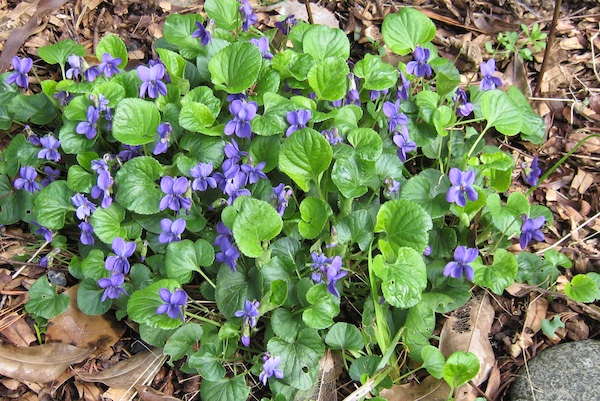
Viola odorata; photo by ALJ
|
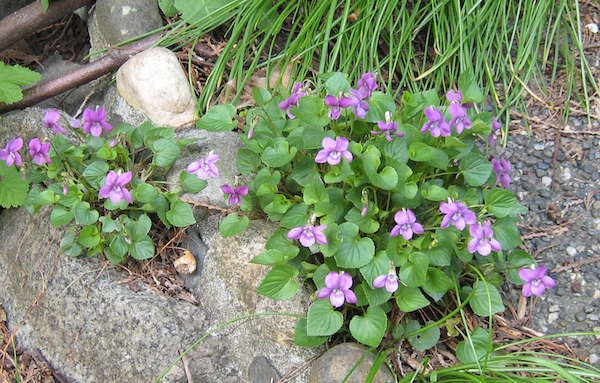
Viola Riviniana; photo by ALJ
|
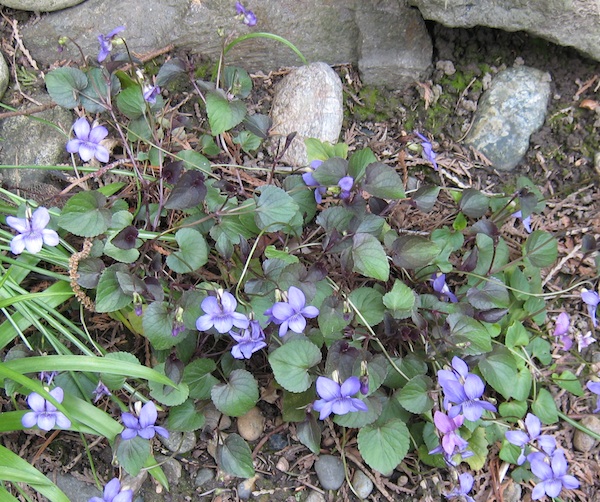
Viola Riviniana purpleleaf; photo by ALJ
|
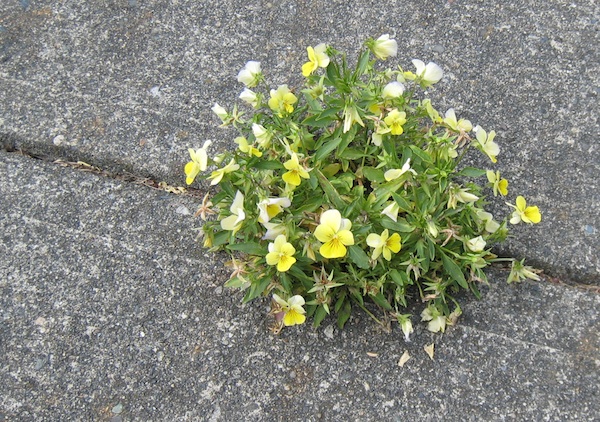
Viola tricolor yellow form; photo by ALJ
|
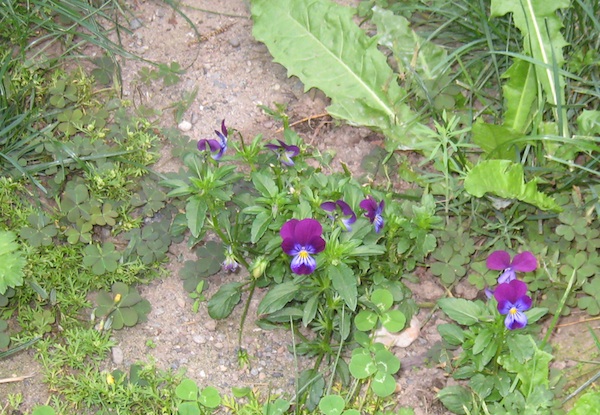
Viola tricolor; photo by ALJ
|
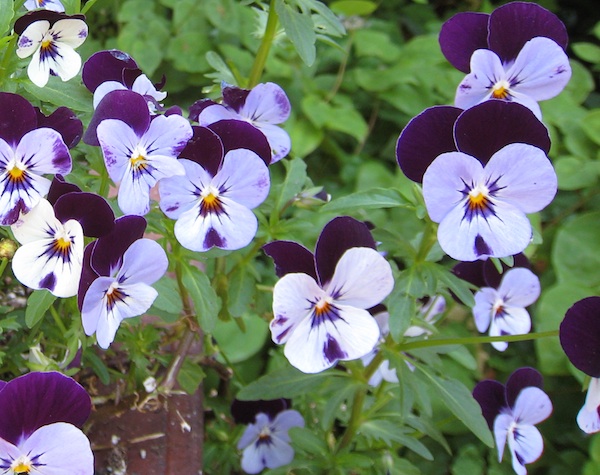
Pansies; photo by ALJ
|
|
|

